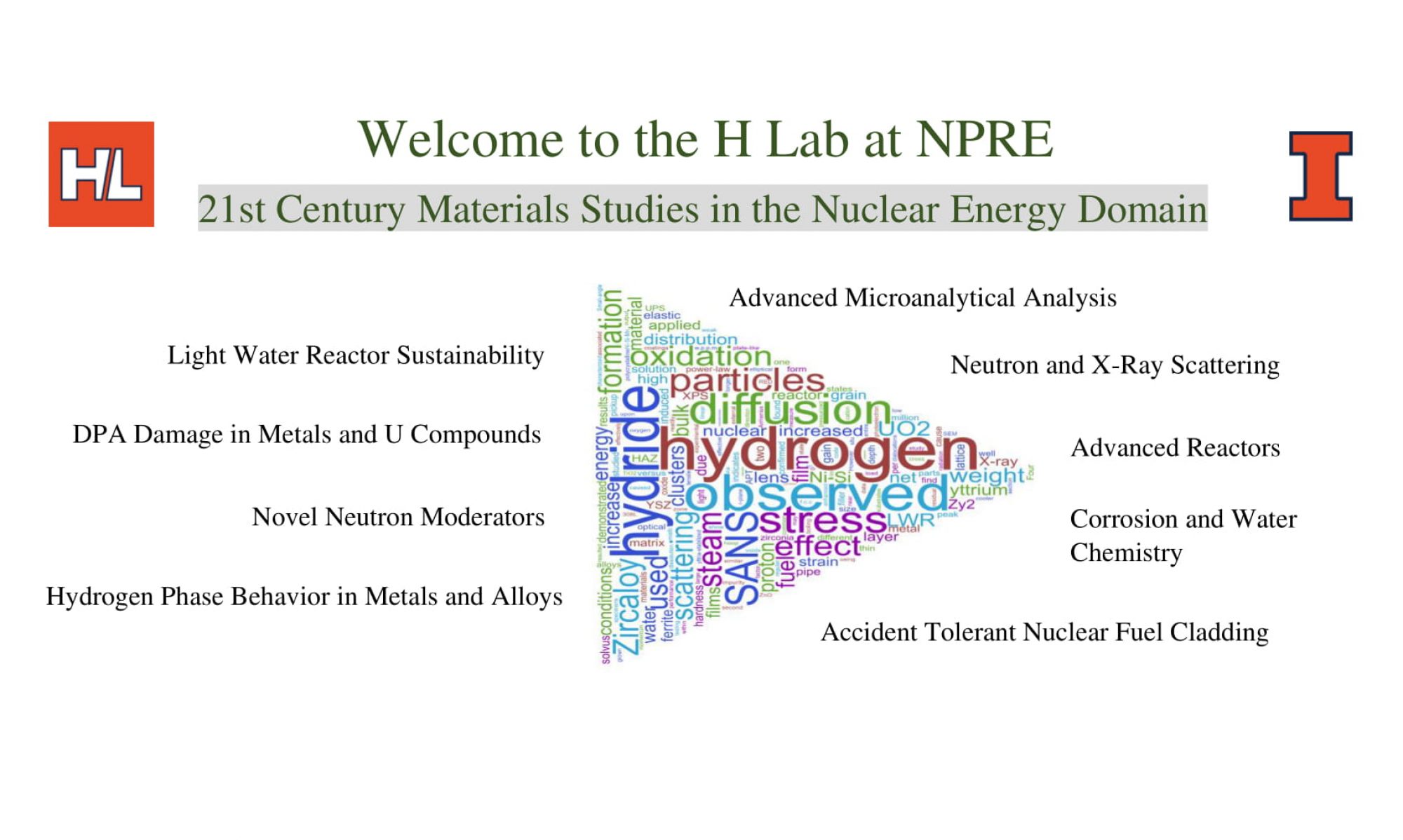The H Lab has decades of experience applying advanced neutron scattering techniques to the study of hydrogen in metals and alloys. This includes hydrogen phase behavior, diffusion, and defect trapping. Publications of some of this work is included in the key publications section.
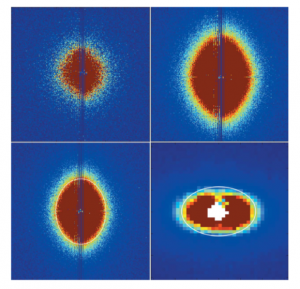
This figures shows the 2-D detector image from small-angle neutron scattering analysis of deuterides in Zircaloy. The strong anisotropic behavior is due to the preferred habit plane of deuteride (hydride) particles in the Zr matrix. The next figure is a fit to this anisotropic behavior using a model for Porod scattering of an ellipsoid of revolution. The ORNL HFIR GP-SANS and the ORNL SNS EQ-SANS instruments were used for these measurements.
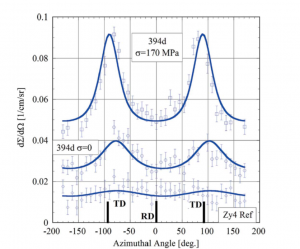
This figure shows fitting of the scattering anisotropy using an model for Porod scattering of aligned ellipsoidal particles (the deuteride plate-like particles) embedded in the Zircaloy matrix. An increase in scattering anisotropy is observed for the sample with an applied tensile load (upper most curve). The reference sample had approximately 20 wppm hydrogen, while the other two two samples has 394 wppm deuterium.
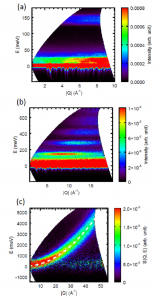
This figure shows inelastic neutron scattering analysis of hydrogen in Zircaloy. Although the figure quality is low, the expected Q^^2 behavior from the impulse approximation can be seen in the lower figure (highlighted with a dashed line). The SNS SEQUOIA instrument was used for these measurements.
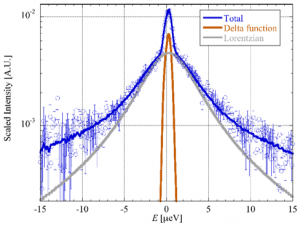
QENS from the diffusion of hydrogen in Zircaloy. These data were used to measure the diffusivity as a function of temperature in Zircaloy. In addition, the analysis of fixed window scans can be used to mark the terminal solid solution solubility lines. The NCNR HFBS instrument was used for these measurements.
